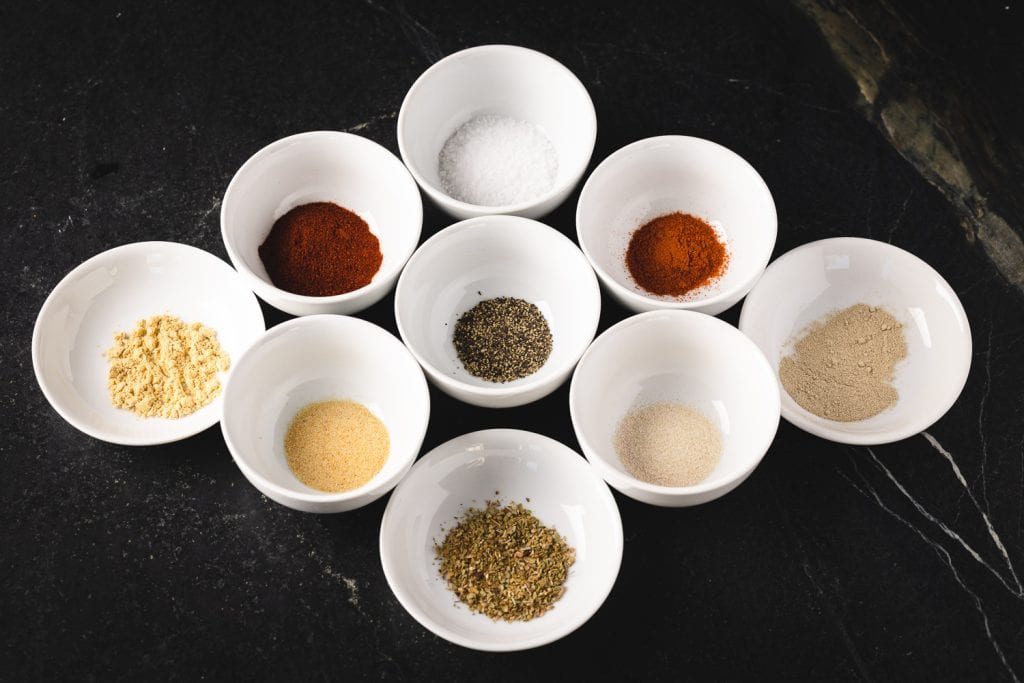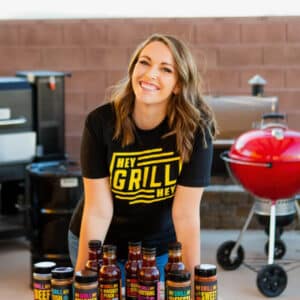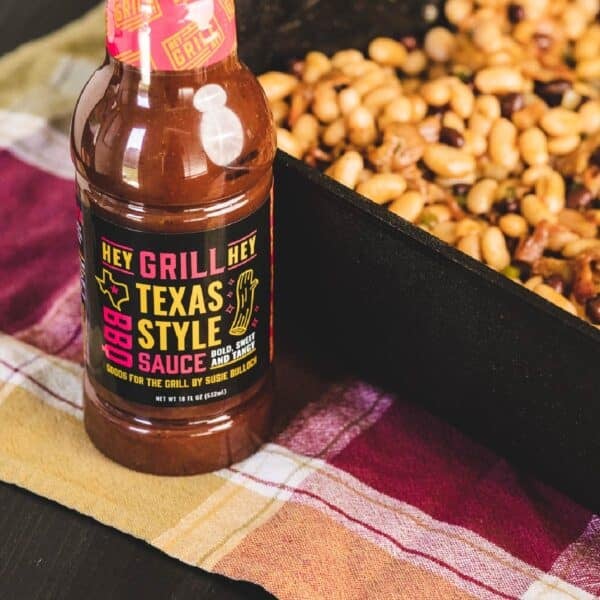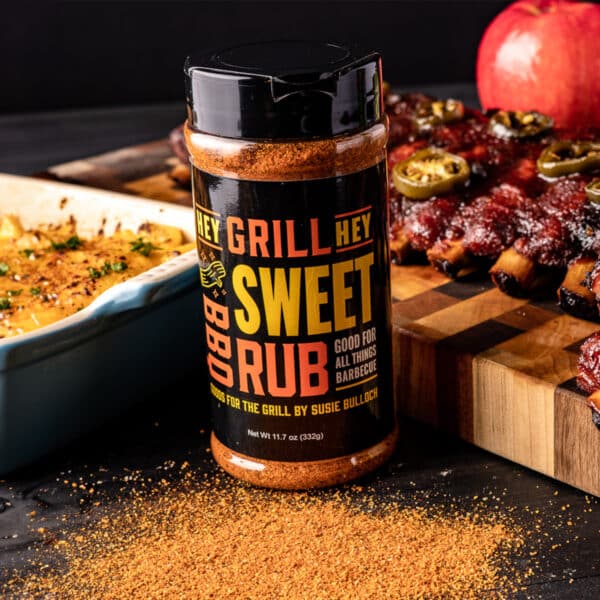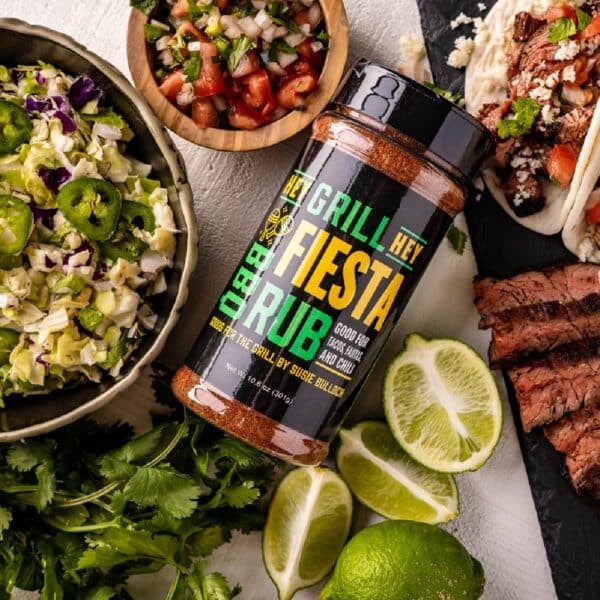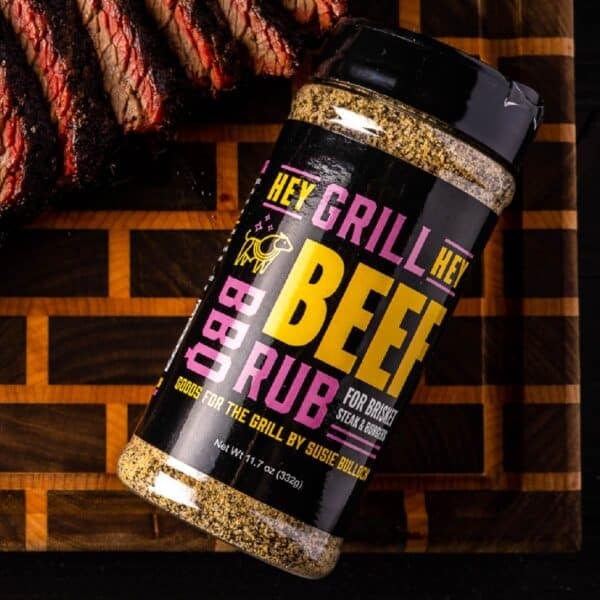How To Make BBQ Rub
On March 29, 2023 (Updated May 07, 2024)
This post may contain affiliate links. Please read our disclosure policy.
If you’ve ever had a hankering to make your own seasonings, this post is here to help. I’ll walk you through different ingredients to use to get the right flavors for your favorite BBQ meats and veggies. Here’s the 411 on how to make bbq rub.
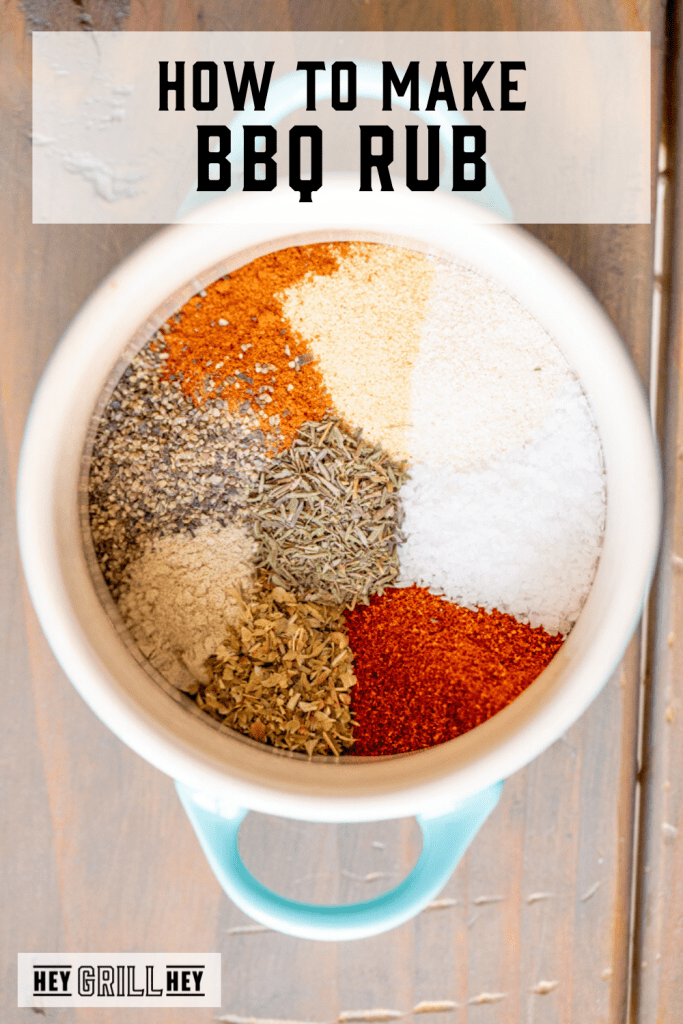
The Basic Ingredients
As a rule of thumb, I always start my rubs with three key ingredients that work well with just about any homemade BBQ rub. These three main ingredients are salt, pepper, and occasionally sugar.
Salt
Salt is a must-have in BBQ rubs, in my opinion. It offsets the richness from the grilled meat and is a perfect pairing for BBQ. Not all salt is created equal, and the salt you use will greatly change the flavor of your seasoning. Let’s break down the different salt options that work best with BBQ.
- Kosher flake salt. This is my go-to salt, and I love it in rubs because the coarse flake stands out so I can see how much I’m actually adding to my meat. It also has a great, clean flavor.
- Table salt. Most table salt is iodized. If you use it in larger quantities, you can begin to taste the iodine and it can become bitter. It’s best to stay away from table salt when making a rub.
- Coarse sea salt. These are best used as a finishing salt, rather than in your rubs. Try sprinkling this fancy salt on a steak after it’s come off the grill.
- Regional salts. Himalayan pink salt, Mediterranean sea salts, etc. are best saved for special occasions.
- Curing salts. Do not confuse these with table salt! Do not use these for rubs or seasonings. Plan on approximately 1 teaspoon of salt per pound of meat when seasoning your meats.
Black Pepper
Next up, I almost always add pepper to my homemade BBQ rubs. This adds some nice low-heat that won’t be too spicy. You can always add additional heat later, if desired, but pepper adds just that right amount of heat to your BBQ. Like salt, you can also get different grains of black pepper. Pepper is best for low and slow smokes. If you’re cooking hot and fast, add the pepper after the meat comes off the grill.
- Coarse grind. Gives you great texture and helps to develop bark on low and slow meat.
- Table grind. This is fine to use for the occasional sprinkle of pepper when needed.
- Fresh ground. Great for steak to release oils as it crushes the berries and you get a nice, fresh flavor.
Sugar
Last up in my base ingredients is sugar. Now, sugar is not quite as consistently used as salt and pepper, but I find that in most rubs sugar is a great compliment to fatty meats.
Not every rub is going to include sugar, but it’s especially delicious on low and slow BBQ. My goto sugar in rubs and seasonings is a dark brown sugar. It gives you a sweetness with a rich flavor.
Adding Flavor to Your Rubs
It’s time to add additional flavor to the rub! There’s no exact ratio to making these rubs, taste as you go and adjust as needed!
- Paprika. This gives a gorgeous red color and it looks amazing on smoked and grilled meats.
- Garlic and onion powder. I almost always use both garlic and onion powder in my rubs because they add a great, solid flavor base.
Other great additions for adding color and flavor to your rubs and seasonings include:
- Chile powder
- Chipotle
- Cayenne
- Mustard powder
- Citrus
- Coriander
- Nutmeg
- Cumin
- Cinnamon
- Allspice
Finally, let’s talk about dried herbs. Dried herbs can be strong, but they’ll add great flavor. My favorite dried herbs to add to BBQ rubs include rosemary, thyme, basil, and parsley.
How to Make BBQ Rub
Now that you know the basics of how to make rubs and seasonings, it’s time to try your hand at making some of your own!
- Determine your flavor profile. Decide what you want your seasoning to go on, and what flavors would work well with that meat or veggie. Beef tastes great with salt, pepper, onion, garlic, and mustard. Pork does well with sweet and savory flavors. And veggies taste amazing with light, herby flavors. Mix and match and play around with your ingredients!
- Combine ingredients. Combine your salt, pepper, sugar, and other seasonings and dried herbs in a mixing bowl. Stir to combine, using a fork to break up any clumps.
- Keep trying! Making your own BBQ rub is a bit of trial and error, so start with smaller amounts of each ingredient, and add until you get it tasting just right.
- Use or store. The best way to test out your new seasoning is to use it! Sprinkle it on your favorite meat or veggie and stick it on the BBQ. If you don’t use all your BBQ rub, you can store it in an airtight container for quite some time.
How to Season Your Meat
Once you have your rub prepared, what is the best way to season your meat? My rule of thumb is to season with authority.
Take your seasoning, sprinkle liberally with authority, and once the seasoning is on the meat, use the palm of your hand to press the rub into the meat. If you rub, it will actually pull off some of the seasoning and disturb the meat.
For instructions on cooking various types of BBQ, head to the Recipes section of the site and browse around!
More Rub Recipes
To help you get an idea as to what ingredients go best with certain foods, check out a few of the most popular BBQ rub recipes here on Hey Grill Hey.
